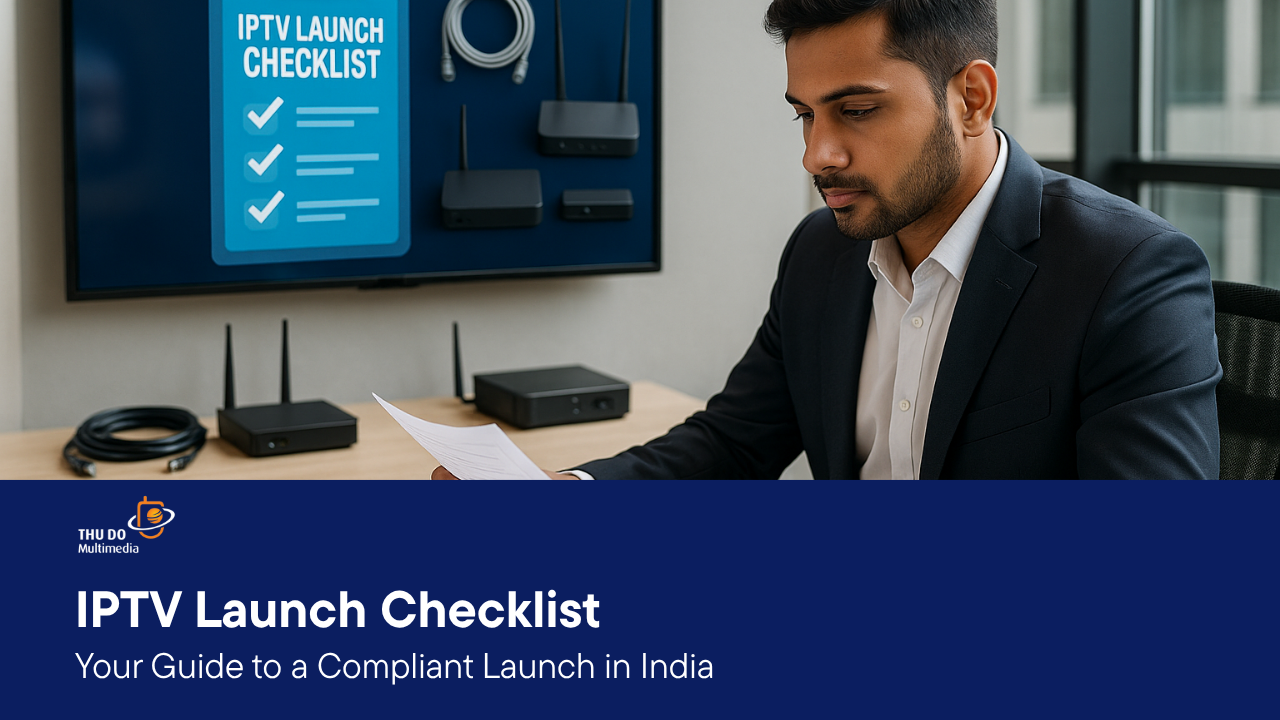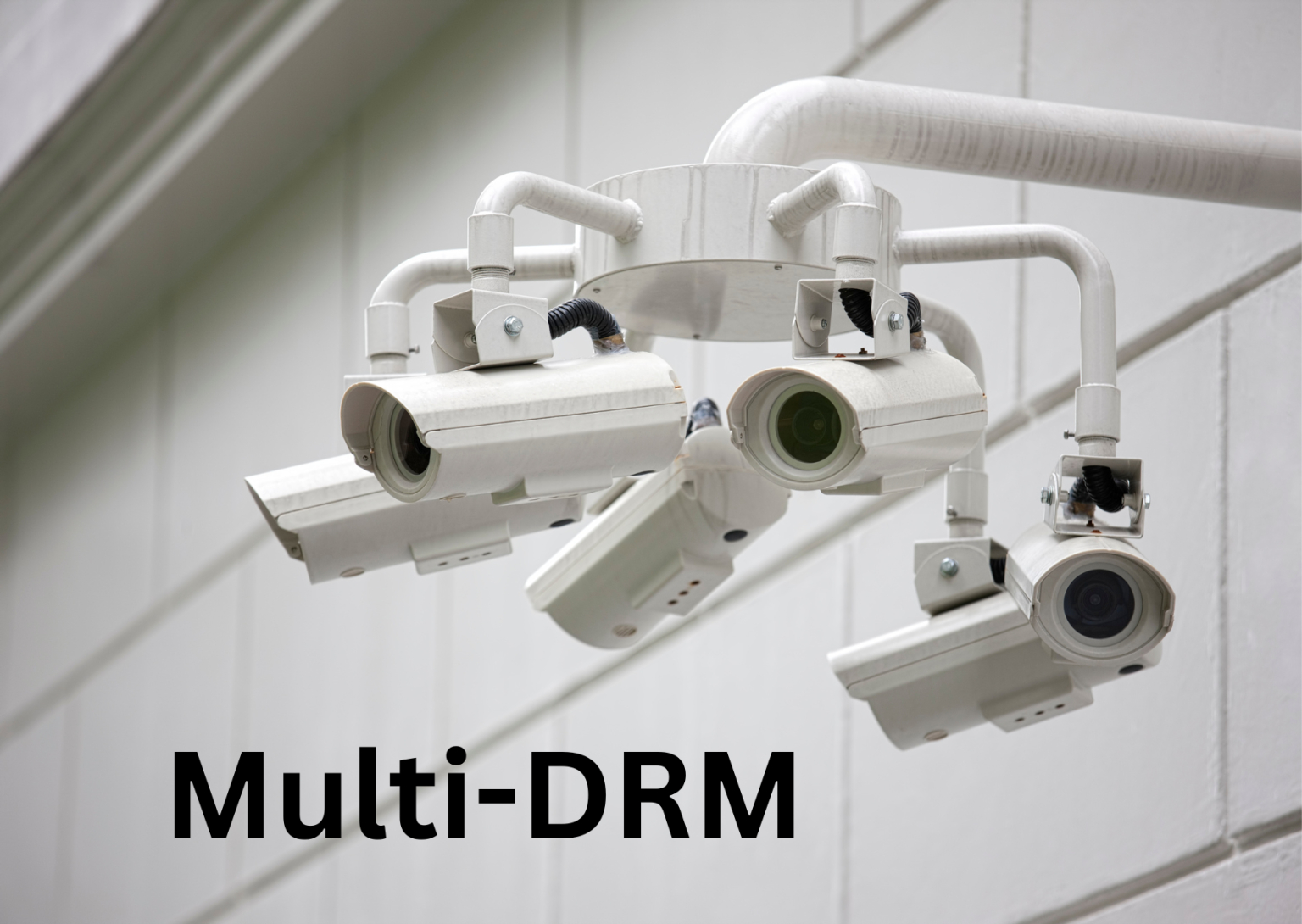
IPTV Launch Checklist: Your Guide to a Compliant Launch in India in 2025
Your complete IPTV installation checklist for a secure and profitable launch in India. Ensure compliance and protect your content with our expert guide
The Ultimate IPTV Installation Checklist for Indian Broadcasters
Launching an IPTV service in India is a significant revenue opportunity, but it’s also a complex technical and regulatory undertaking. Without a comprehensive plan, operators risk costly delays, security breaches, and severe regulatory penalties. This IPTV installation checklist is designed for B2B decision-makers at Indian cable TV companies, MSOs, and broadcasters. It’s a no-fluff guide to navigating the critical steps for a successful, secure, and compliant launch.
We’ll move beyond basic setup and focus on the strategic pillars that ensure long-term profitability and operational stability: infrastructure, security, and monetization, with a special focus on the mandatory compliance requirements from the Telecom Regulatory Authority of India (TRAI).
Why a Detailed IPTV Launch Plan is Non-Negotiable in Today’s Market
Entering the IPTV market without a meticulous launch plan is like navigating the Mumbai local trains during rush hour without a destination, chaotic and risky. The primary risk is not just technical failure but business failure. Piracy can erode up to 30-40% of potential revenue, while non-compliance with government mandates can lead to fines or even the suspension of your license to operate.
A strategic IPTV launch plan addresses these risks head-on. It transforms a technical project into a predictable business venture by:
- Mapping Dependencies: Understanding how your Subscriber Management System (SMS) must integrate with your Digital Rights Management (DRM) and billing platform.
- Ensuring Compliance from Day One: Building regulatory requirements, like those in TRAI’s Schedule 10, into the core architecture, not as an afterthought.
- Forecasting Realistic Costs: Accounting for everything from server hardware and content delivery networks (CDNs) to the crucial investment in a robust, on-premise DRM solution.
- Defining the Customer Experience: Planning for seamless content delivery, from user authentication to playback on multiple devices.
Ignoring this planning stage is the single most common reason for launch delays and budget overruns.
Core Infrastructure: The Foundational System Requirements for Your IPTV Service
Before you can deliver a single stream, your backend infrastructure must be rock-solid. These are the non-negotiable system requirements for a scalable IPTV service.
- Headend & Transcoding: This is the heart of your operation. You need powerful servers to receive content (from satellite or fiber), transcode it into multiple bitrates for adaptive streaming (HLS/DASH), and prepare it for delivery.
- Middleware & Subscriber Management System (SMS): Your middleware is the brain, managing the user interface, EPG (Electronic Program Guide), and service packages. It must integrate deeply with your SMS, which handles subscriber authentication, billing cycles, and package entitlements. This integration is vital for controlling who gets access to what content.
- Content Delivery Network (CDN): Whether you build your own or partner with a provider, a CDN is essential for delivering smooth, buffer-free streams to subscribers across different geographical locations. For IPTV, a unicast delivery model requires a robust CDN to handle individual streams to each user.
- On-Premise Servers: For full control, security, and compliance, an on-premise or private cloud server setup is the preferred model in India. This ensures all data, especially sensitive license key transactions and user information, is stored within Indian territory, a key requirement of Schedule 10. This gives you complete control over your operational data and security posture.
The Critical Checkbox: Integrating Schedule 10 Compliant DRM Security
Here is the most critical checklist item for any Indian operator today:
TRAI Schedule 10 compliance is mandatory. Your IPTV service must be protected by a DRM system that meets the specific, stringent requirements laid out by the regulator. Failure to comply is not an option.
Old or foreign-hosted DRM solutions are often insufficient because they don’t meet the specific local mandates. Your DRM is not just a security tool; it’s a license to operate.
Your DRM on-premise solution must include:
- Multi-DRM Support: The system must natively support Google Widevine, Apple FairPlay, and Microsoft PlayReady to securely deliver content to every device, from Android STBs to iPhones.
- On-Premise License Server: The license server, which provides the decryption keys to authenticated users, must be hosted within your infrastructure in India. This guarantees data sovereignty and allows for direct auditing by regulatory bodies.
- Forensic Watermarking & Anti-Piracy: Beyond encryption, your solution must have advanced anti-piracy features. This includes forensic watermarking to trace content leaks back to the source, fingerprinting, and anti-screen recording technology to prevent unauthorized copying.
- Auditable Reporting & SMS Integration: The DRM system must be able to generate detailed reports for monitoring and auditing purposes. Crucially, it needs to be integrated with your SMS to verify that a license request is coming from a valid, paying subscriber. This creates a closed-loop, auditable system that TRAI requires.
Choosing a pre-audited, Schedule 10-compliant on-premise DRM solution is the fastest and safest path to market. It removes legal ambiguity and ensures your technical framework is built on a compliant foundation.
Content & Monetization: Finalizing Your Go-to-Market Strategy
With your infrastructure and security locked down, the final step is packaging your service for the market.
- Content Acquisition: Secure the rights for the live channels, VOD content, and local exclusives that will attract your target audience.
- Packaging and Pricing: Define your subscription tiers (e.g., Basic, Premium, Sports Pack) and pricing strategy (e.g., SVOD, TVOD). This logic will be implemented in your SMS and enforced by the DRM.
- Client Applications: Develop or procure user-friendly applications for your target platforms (Android TV, iOS, Web browsers, etc.). The user experience on these apps is a key differentiator.
- Marketing & Launch: Prepare your marketing campaigns to attract your first subscribers. Highlight your unique content offerings and the superior, secure viewing experience you provide.
Real India Use Case: How a Regional MSO Secured Their IPTV Launch
A mid-sized MSO in Gujarat was preparing to launch a new IPTV service targeting over 100,000 households. Their biggest challenge was the tight deadline to comply with the new Schedule 10 mandate. Their existing content security was not compliant.
By choosing a deploy-ready, on-premise DRM solution that was already audited for Schedule 10, they bypassed months of potential development and legal consultation. The provider’s local Indian team facilitated a rapid integration with their existing SMS and headend within weeks.
The result: They launched on schedule with a fully compliant, secure platform. The integrated forensic watermarking immediately helped them identify and shut down a small piracy leak within the first month of operation, protecting their premium cricket broadcast rights and securing their revenue stream from day one.
Ready to Comply and Protect Your Content?
Don’t let regulatory hurdles and security risks delay your IPTV launch. Our on-premise DRM solution is designed specifically for the Indian market, fully compliant with Schedule 10, pre-audited, and ready for rapid deployment.
For more on how IPTV End-to-End solutions help providers like yours win in competitive markets, check out our related post: IPTV End-to-End 101 Series: How Small ISPs Can Successfully Deliver EPG Like Jio
Secure your revenue and your license to operate:
- Book a Live Demo: See how our DRM integrates with your SMS and protects content in real-time
- Contact Our India Team: Speak with our local experts who understand your market and technical needs


Recent Comments